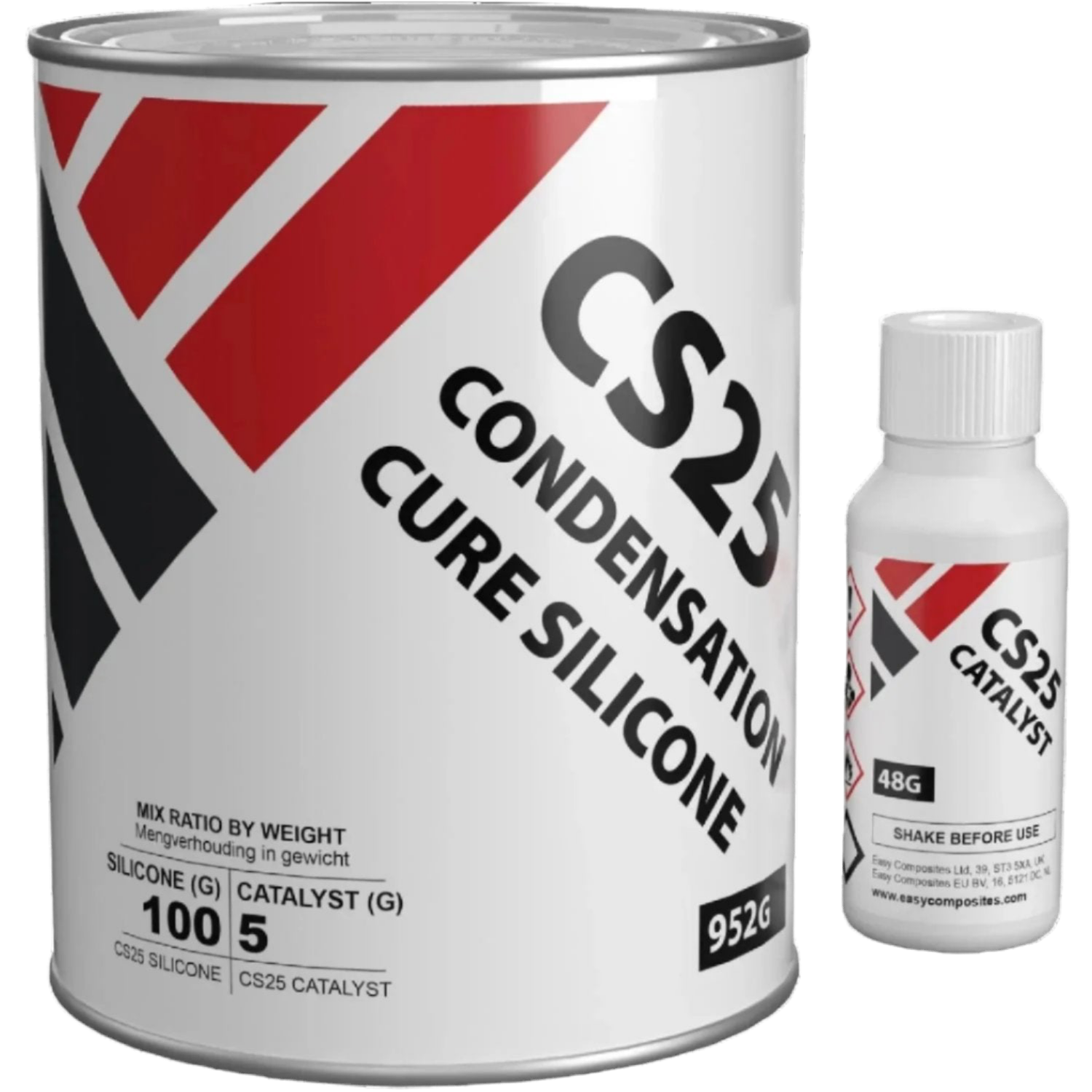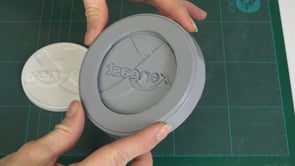


Silicone for molding CS25
Tax included.
CS25 Silicone Rubber is a 2-component casting compound that has a low viscosity and is used to make castings of other objects to create a silicone mold. CS25 is very user-friendly and easy to use.
When this is hardened it is soft and flexible, and is therefore very well suited to making molds of things and seaweed with strange shapes. Relatively long open time (time during which you can work before it starts to harden) means that you have plenty of time to carefully empty and get air bubbles out of the mixture. You can also use a vacuum chamber to get air bubbles out of this silicone if you wish. This mass gives a very accurate casting/reproduction of the object you are casting.
The finished mold can be used to make copies of the original part with good surface reproduction from, for example, polyester, epoxy, polyurethane resin, urethane, wax, plaster and so on.
In summary:
- Easy to use, no special equipment required
- Strong tear resistance and good tensile strength make it easy to remove complicated castings without damaging the casting.
- Good chemical resistance to styrene and polyurethane.
- Low viscosity, good flow properties
- Great value for money
- Recommend using a syringe to extract catalyst from the bottle
Mixing ratios and curing times
100 parts by weight base (Condensation Cure Silicone Rubber)
5 parts by weight hardener (Condensation Cure Silicone Catalyst)
Pot life after base and hardener are mixed together: Approx. 30 minutes at 20°C
Curing time at 20°C: Approximately 24 hours.
The casting compound hardens down to 10°C, but the hardening time will take longer at low temperatures.
This casting compound consists of two components (base and hardener), and the package comes with the correct amount of each component. The base and hardener must be mixed together in the correct ratio for the casting compound to harden.
Instructions for use
- Find an empty box or crate to use for the casting work.
- Place the object to be cast/reproduced in the box. It is best to glue it to the bottom of the box so that it does not move when you pour in the casting compound.
- Shake the bottle of hardener before mixing it with the base.
- Use a mixing cup, a measuring syringe or a scale to measure out the correct amount of base and hardener.
- Mix well, but carefully to avoid "whipping" air into the mixture when mixing the two components.
- Scrape the edges and bottom of the mixing cup to ensure that you mix the hardener and base well together.
- Then pour the ready-mixed casting compound over the object in the box that is to be cast. Pour carefully and in a thin stream. Let the casting compound flow over and cover the object in the box.
- If air bubbles appear on the surface of the casting compound, you can puncture them with a toothpick. If you have a vacuum chamber, this can also be used to remove air bubbles from the casting compound.
- Let the casting compound cure for 24 hours at 20°C. If you increase the temperature, the curing process will go faster.
- Once the casting compound has hardened, detach the crate or box from the hardened casting compound.
- Then loosen the casting compound from the object you have made a cast of. If necessary, use a wallpaper knife to help.
- If you have used a tape knife to split the hardened casting compound to release it from the object you have cast, you can then tape the mold back together before filling it with epoxy to make a new reproduction.
Always do a test
CS25 Silicone Rubber can be used to take casts of most types of objects in plastic, metal, wood, etc. Remember, some objects must be inserted with wax before pouring the casting compound so that it will release from the object after hardening.
We always recommend that you do a test before carrying out important work so that you are confident in how the materials work.
Wear gloves and protective glasses and ensure good ventilation when using the casting compound.
Always familiarize yourself with safety data sheets and study technical data in SDS and TDS respectively.


